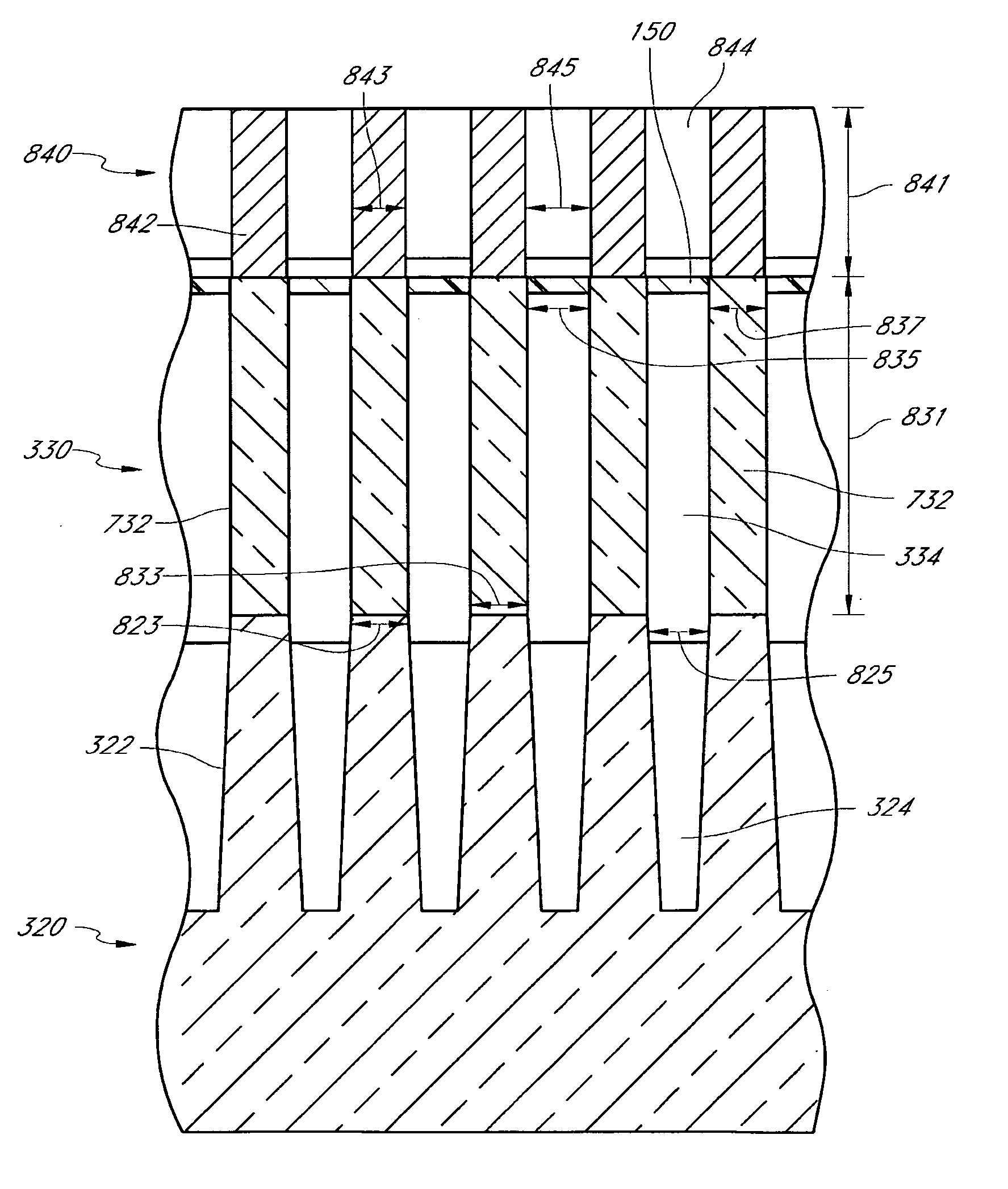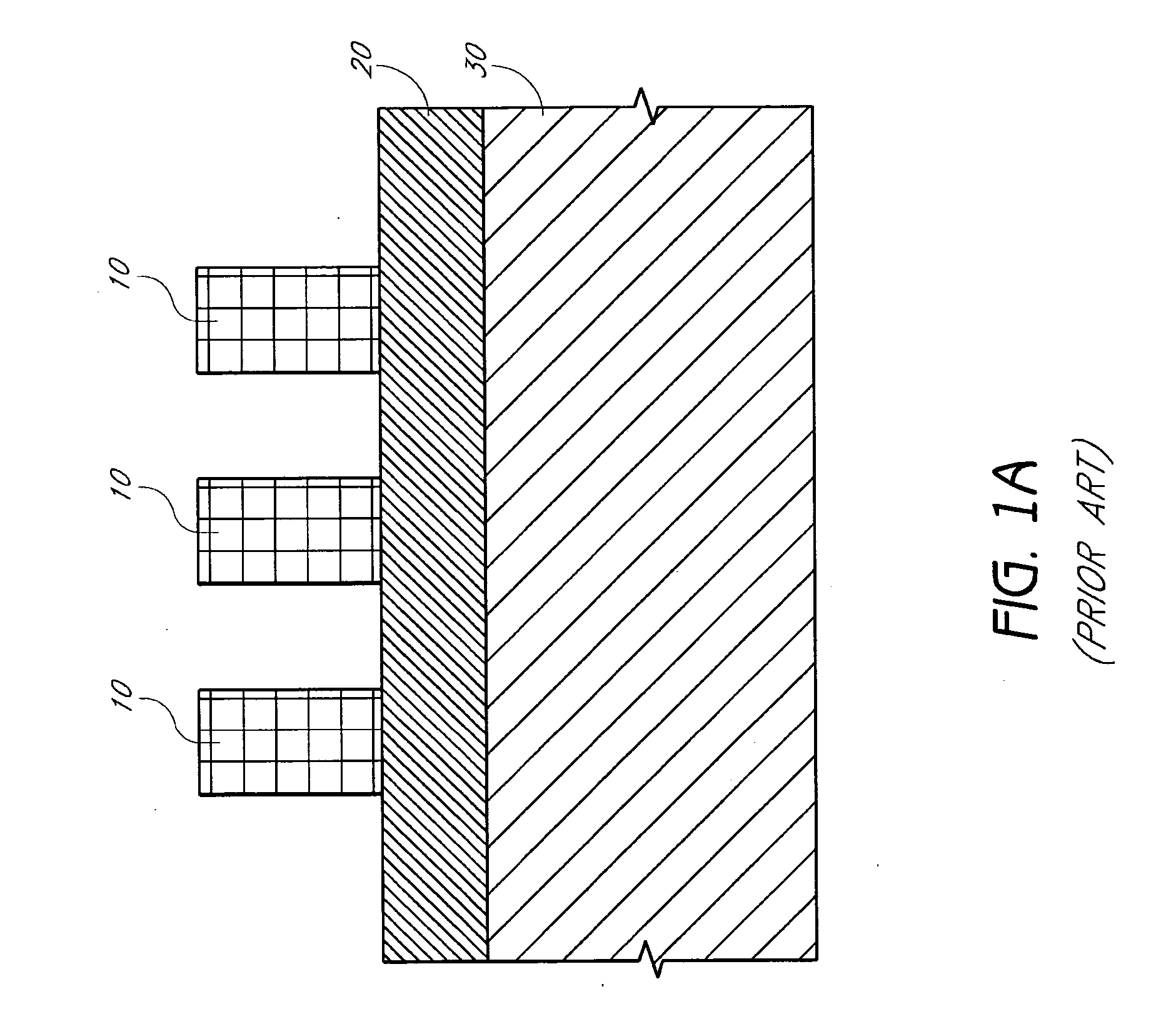Method of forming pitch multipled contacts
a technology of multiple contact and pitch, applied in the direction of basic electric elements, electrical equipment, semiconductor devices, etc., can solve the problems of not allowing the density of contact features to match, additional steps can involve considerable additional expense,
- Summary
- Abstract
- Description
- Claims
- Application Information
AI Technical Summary
Benefits of technology
Problems solved by technology
Method used
Image
Examples
Embodiment Construction
[0042] With reference to FIG. 2, a portion of an integrated circuit is shown in cross-section. In an underlying substrate level 220, the features 222 are formed to extend upwardly. In some embodiments, the features 222 taper so that the features 222 have a thinner cross section at their upper extremity than they do at their bottom extremity. This tapered shape can be a result of an etching step with a lateral etch component due to the upper portions of the features being exposed to an etching chemistry for a longer period of time than the lower portions. The features 222 are advantageously longer in a dimension into and out of the plane of the paper, so that the critical dimension of the features 222 is different in the X and Y dimensions. Transistor pillars (not shown) preferably protrude above the ridges defined by the features at other locations. U.S. patent application Ser. No. 11 / 010,752, to Haller, filed Dec. 13, 2004, and assigned to Micron, Inc. (Atty. docket No. MICRON.288A...
PUM
 Login to View More
Login to View More Abstract
Description
Claims
Application Information
 Login to View More
Login to View More - R&D
- Intellectual Property
- Life Sciences
- Materials
- Tech Scout
- Unparalleled Data Quality
- Higher Quality Content
- 60% Fewer Hallucinations
Browse by: Latest US Patents, China's latest patents, Technical Efficacy Thesaurus, Application Domain, Technology Topic, Popular Technical Reports.
© 2025 PatSnap. All rights reserved.Legal|Privacy policy|Modern Slavery Act Transparency Statement|Sitemap|About US| Contact US: help@patsnap.com



